Rebuilding Co-existence
First published in Sanctuary Asia,
Vol. 42
No. 6,
June 2022
Snow Leopard, Brown Bear And Human Interactions in Zanskar, Ladakh
By Ashish Kothari
Sometimes I have been so angry, I wanted to kill the animal!”… “It is a living being like us, and it must eat, but I just wish we could save our sheep!”.. “Earlier it would only take our livestock, now it is entering our houses. We are scared…” “I lost all my most precious food items, the ghee, the butter, the sugar… how can I make up such a loss?”
On a visit to assess the human-wildlife mitigation work of the Snow Leopard Conservancy – India Trust (SLC-IT) in Zanskar, Ladakh, in September-early October 2021, I listened to these and other expressions of dismay, anger, and fear, on the depredations and damage caused by snow leopards and brown bears.
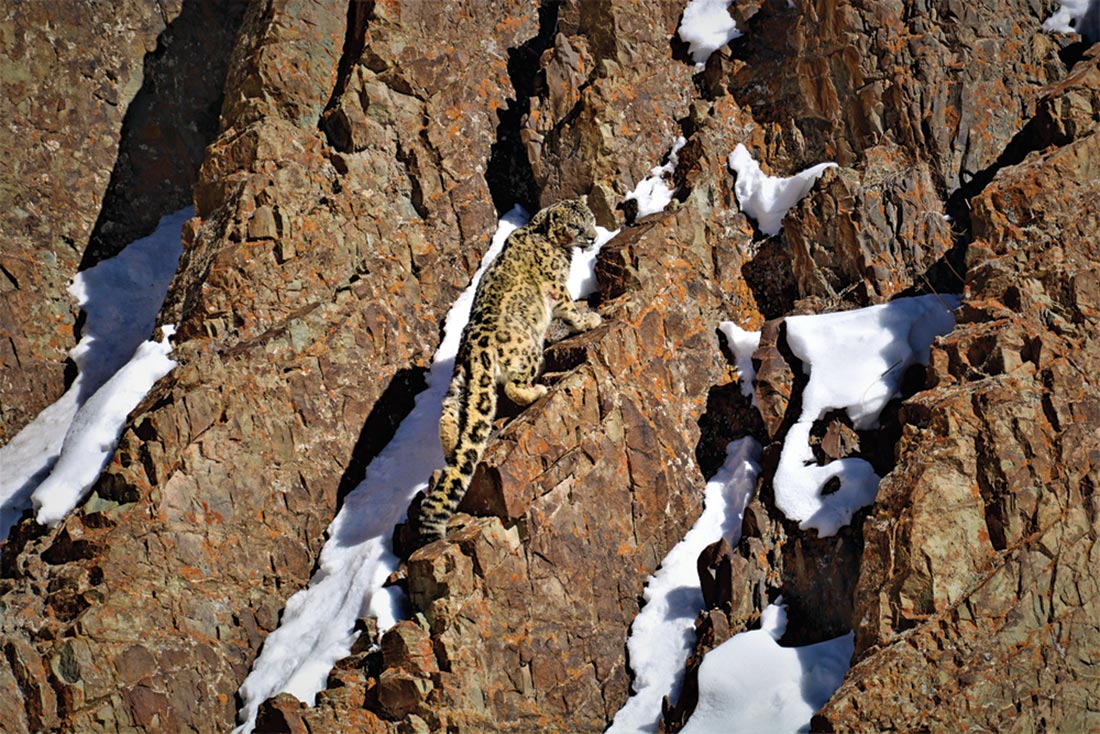
Ladakh’s state animal, the snow leopard’s future depends on vital conservation efforts of the SLC-IT. By involving communities and also preventing livestock depredations, they are working toward building a sustainable future and coexistence for humans and wildlife. Photo: Jigmet Dadul/SLC IT.
Co-existence and Conflict
In this cold desert landscape with its harsh winter weather, villages are small and spread out over a vast territory. It is a landscape that looks barren, but supports extensive pastoralism, some farming, and a unique diversity of wildlife, including predators such as the snow leopard and the brown bear. For centuries, there has been co-existence between people and wildlife. Livestock depredation by wild predators is likely to be as old as the human settlements here, and is possibly the reason for the occasional revenge killing (though there are, according to SLC-IT, no recorded cases of either snow leopard or brown bear being killed in Zanskar). This makes the co-existence between people and wildlife uneasy, but it has been sustained for as long as people can remember, strengthened by the predominantly Buddhist orientation of its people.
In recent times, this seems to have diminished. In the case of snow leopards, it is not clear if this is due to an increase in depredation, or because the losses are felt to be greater with the higher market value of livestock. In some cases, the damage is dramatic; in Ichar village, I met Lobgzang Ishey and Stanzin Kunzang, who lost about 40 goats and sheep in one frenzied night of killing by a snow leopard inside their pen. While incidents with such high losses are mercifully uncommon, villages still seem to have lost 20-30 livestock every year. Until, that is, SLC-IT moved in with some simple but effective solutions.
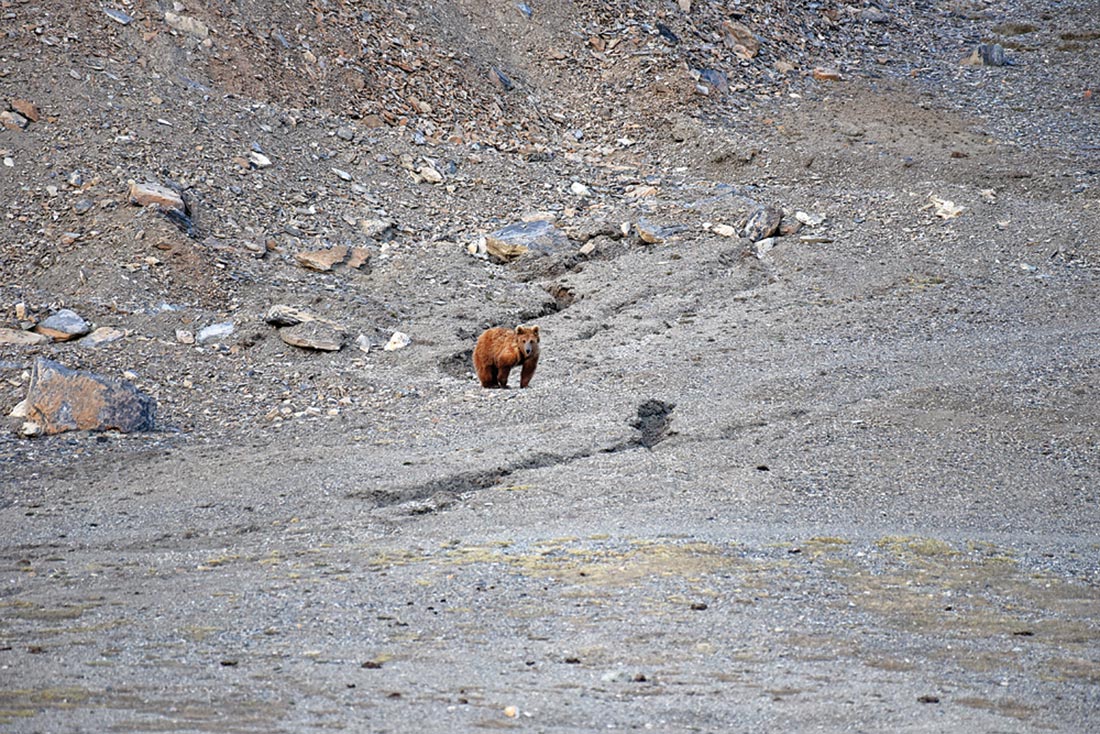
Omnivorous, the Himalayan brown bear’s diet varies from fruit to insects and small mammals. Photo: Jigmet Dadul/SLC IT.
With the brown bear, old patterns of picking up livestock have continued, but the scale has always been low. What has changed in the last five to 10 years is that bears now enter houses, schools and provision stores, and raid food stocks. A day after I reached Padum, Zanskar’s main town, the SLC-IT team received a call from a school in the nearby Tara village about a bear that had broken their store window, entered and created a mess; when we visited, there were flour and food containers scattered across the floor, trailing out to where the bear must have made its exit after gorging on its findings.
Family after family in the Stod valley of Zanksar revealed that the bear’s favourite target is their most precious items stored for the winter – ghee, butter, sugar. The period before winter seems to be the most intense time for these attacks, as the bears fatten themselves in preparation for hibernation around September-October. Apart from the material loss, which is substantial given the high value of these food items, people fear for their own safety. Villagers of Abran said, “We are scared to have children playing outside after dusk.” There is as yet only one recorded case of a brown bear attacking people in Zanskar, though, and it was apparently while someone was trying to chase it away.
The snow leopard, recently declared Ladakh’s ‘state’ animal, is considered threatened throughout its range and categorised as globally Vulnerable in the IUCN Red List. The brown bear, though classified as Least Concern by IUCN, is still considered to require conservation attention. In India, both are on Schedule 1 of the Wild Life (Protection) Act 1972, strictly protected against hunting, and the subspecies of brown bear found in Ladakh is considered endangered. It is therefore important to sustain or, where lost, re-establish the traditional feeling that these animals are as much a part of the landscape as are humans. This requires dealing with the kind of losses and fear mentioned above, which is precisely what SLC-IT has stepped in to do.
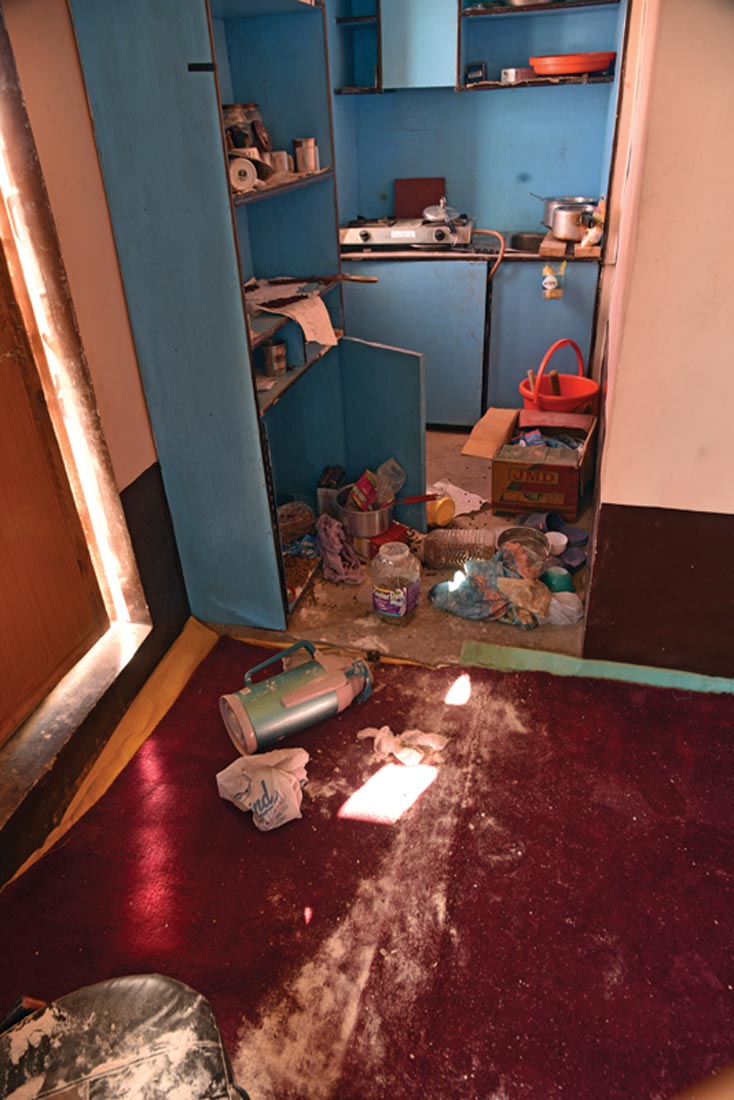
However, possibly on account of reduced availability of these in their natural habitat, bears are now increasingly raiding human habitations for food as seen here in a store room of a school in Tara village, Zanskar. SLC-IT is experimenting with innovative solutions such as locked metal storage boxes, alarm systems and ‘fox lights’ to prevent such incidences. Photo: Ashish Kothari.
Mitigating Conflict
SLC-IT, established in 2003 with the purpose of protecting the snow leopard, its prey and habitat across Ladakh, has worked with the recognition that the only way forward is through community participation and efforts that sustain co-existence across a landscape shared by humans and wildlife. It has used a multi-pronged strategy: reducing livestock depredation by leopards, generating compensation mechanisms for damage that continues to take place, and enhancing conservation-friendly livelihood options. Accompanying all these are programmes to create greater understanding and awareness about the ecological dynamics and behaviour of the species, and habitat conservation.
In Zanskar, SLC’s work began with a focus on snow leopards, creating a simple and innovative new design for livestock corrals. To replace uncovered or flimsily covered pens, SLC-IT experimented with corrals that are fully and firmly covered, and redesigned walls, allowing no space for the leopard to enter. The strategy showed dramatic results. Kalzang Chosphel, one of SLC-IT’s three members in Zanskar said, “We’ve built 45 such structures in about 40 villages since 2015, and all have been 100 per cent successful in keeping the leopard out, except in one case where the owner made a construction error. We are confident that we have found a long-term solution to livestock lifting inside villages.”
Beneficiary families I met in half a dozen villages expressed enthusiastic appreciation of this work. A sheep or goat is valued at about Rs. 10,000 on average, which would make the savings collectively amount to several lakh rupees. Thukjay Rinchin, woman panch of Kumik village happily proclaimed, “We are not only not losing our sheep and goats, but are also able to sleep better, not having to guard livestock outside on cold nights, and not being tense all the time.” The families that are yet to receive the intervention are requesting that they be added to the list
of beneficiaries.
Livestock depredation continues, however, in the summer pastures, or when livestock are taken for grazing near the villages. While community corrals in the pastures would help, it will not eliminate killing. For this, it is important that some type of livestock insurance or compensation scheme be implemented. SLC-IT and the Nature Conservation Foundation (NCF) have successfully experimented with this elsewhere in Ladakh, and so it can be introduced in Zanskar. Ideally, the Wildlife Department of Kargil (within which Zanskar falls) should address this, but it has limited presence in the area, with only two temporary guards stationed there. The Department provided compensation to a family in Ichar that lost 40 heads of livestock, but, according to the family, much less than what it should have received.
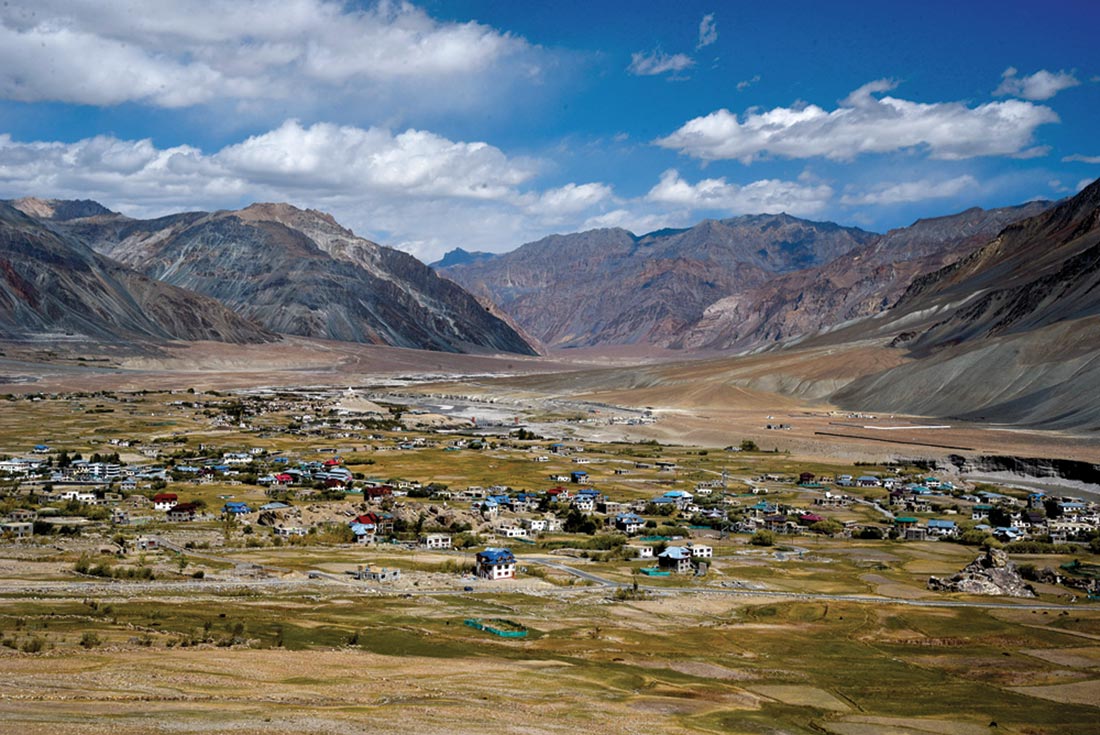
Padum town is the administrative centre of Zanskar tehsil in Ladakh, with an average altitude of 3,657 m. Its outskirts and surrounding villages are often visited by wild bears in search of food, especially before the onset of winter. Photo: Ashish Kothari.
While working on snow leopards, however, SLC-IT found that in several villages, especially in Stod Valley, brown bear damage was a bigger issue than snow leopard predation. The community itself has tried a few methods to stop food raiding, such as installing metal grills on windows. But such methods have mostly failed. The bear is a powerful animal, and can easily pull out the grill or break through walls. SLC-IT has had to innovate based on the bear’s behaviour. What has worked well is metal boxes, with a lock system that the bear cannot figure out or maneuver. In Khushul village, where 10 such boxes have been given, women find themselves at ease at night, not having to worry about bears. Another method of bear-proofing is a pressure-activated alarm system, set on doors to food storerooms or livestock enclosures. At the Dorjay Zong nunnery, where SLC-IT has installed one, one of the elderly nuns demonstrated how it worked, and expressed happiness that bear attacks on their food stores have now ceased. There is a now a growing demand for boxes and alarm systems from other families.
For both the snow leopard and brown bear, SLC-IT has also tried ‘fox lights’, originally developed in Australia to deter foxes from attacking poultry or livestock. These generate a rotating, random sequence of flashes, in multiple colours. They have proven to be quite effective against the leopard, and for a while against bears too, but the latter seem to have realised that they do not pose a danger. The school near Padum, for instance, had such a light, that after an initial period of deterrence failed to foil the above mentioned bear attack. Kirti Chavan of SLC-IT, explained that bears have shown themselves to be highly adaptive, requiring SLC-IT to innovate frequently to reduce such raids!
Related challenges
Depradation by predators is not the only issue facing Zanskar’s residents. Over the last few years, visibly receding glaciers and strange changes in weather patterns (for instance, much less snow) have brought painful awareness of the climate crisis to the people living there (see page 86). The bears’ recent change in behaviour may be connected to these factors too, which might be affecting their habitat and prey, but this needs further research. In any case, both agriculture and pastoralism are being impacted as water and fodder availability reduces. SLC-IT conducts awareness programmes relating to climate change. One innovative programme it has launched is the training of about a dozen village volunteers to take photographs of glaciers at regular intervals, with the aim that over a decade, their advance or recession will be documented, and this evidence can be used to spread awareness. In one village (Kumic), responding to distress calls, the organisation has also helped with enhancing water supplies. Receding glaciers are reducing water availability in many villages, and as Diskit Landon and Tenzing Lamo of the Zanskar Women’s Association told me, these changes affect women the most.
Another challenge is tourism. Many other parts of Ladakh are already facing the impacts of mass tourism, including haphazard construction, waste mismanagement, vehicular traffic and pollution, cultural influences such as junk food, disturbance to wildlife, and others. Aamir Khan’s film ‘3 Idiots’, partly set in Ladakh, features beautiful spots like Pangong Lake, and was singularly responsible for a sudden spurt in tourist interest in the region, about a decade ago. Since then, over 3,00,000 tourists have visited Ladakh, which is around the same number as its resident population! Zanskar, so far not affected by this onslaught of visitors, is now opening up, with roads coming in from various sides. It is not difficult to predict the impacts in general, but groups like SLC-IT will have to keep an eye out for how even human-wildlife conflicts may increase as the habitat gets further disturbed. Another group, the Zanskar Conservancy Movement, has begun actively campaigning for better tourism management, and one can only hope it has some impact on the policy of the Union Territory (dictated all the way from Delhi).
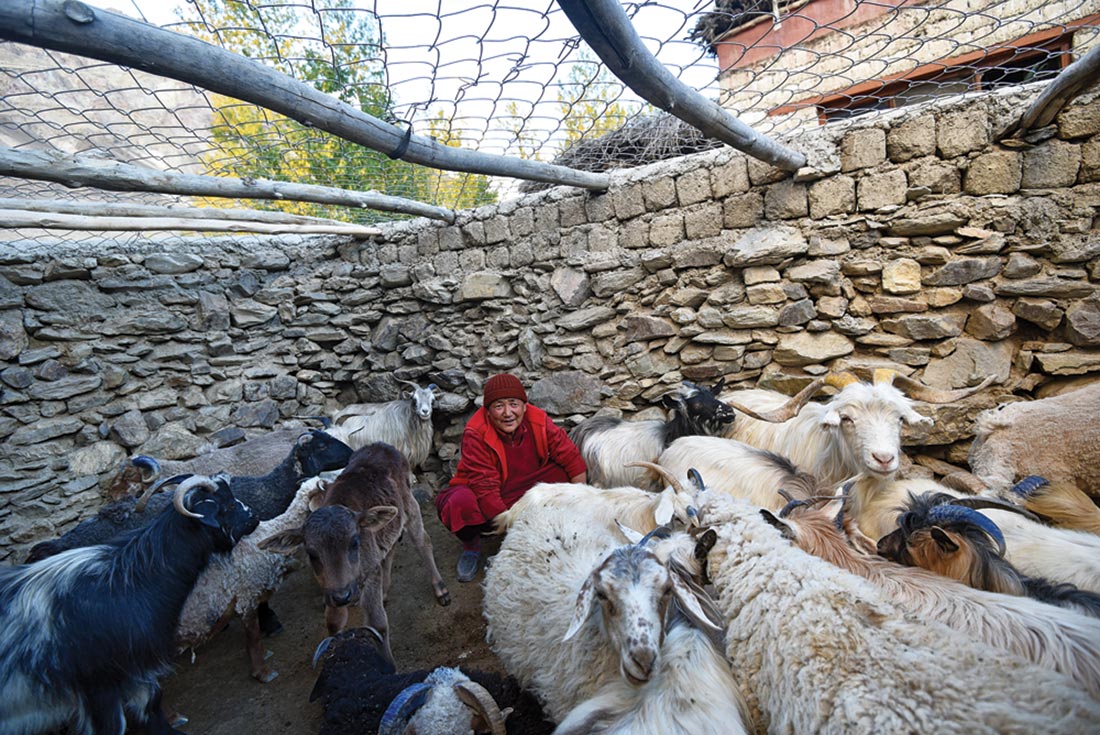
To discourage snow leopards from predating on livestock such as sheep and goat, SLC-IT replaced uncovered or flimsily covered pens with fully-covered corrals with solid walls, preventing the entry of snow leopards. This proved largely successful, and families implementing this system have been appreciative of these efforts. Photo: Ashish Kothari.
Zanskar’s villages are also facing an increasing crisis of livelihoods, both because many traditional occupations are less viable due to climate and economic changes, and also because younger generations do not necessarily want to continue those occupations. This has actually provided groups like SLC-IT an opportunity, to link conservation with new livelihood options that build on traditional skills. Homestay-based ecotourism, which SLC-IT pioneered in 2003, along with the revival of crafts and the creation of markets for their products, are viable options. I have had the pleasure of staying in the beautiful villages of Saspotsey and Hemis Shukpachan, both great destinations to see snow leopards and lots of other wildlife. In Padum too, I was hosted at the Palmo homestay, whose owners insisted on giving me only local, homemade food and made me feel like part of the family. Such initiatives would complete the triangle of strategies for more effective conservation: reduction in predator related damage, compensation and insurance, where damage still continues, and enhancement of livelihood options linked to wildlife. It is also important to work with the most disadvantaged section of the community and assess the ways in which they are uniquely affected by climate change, wildlife-human conflict, mass tourism, etc.
What does the future hold?
SLC-IT’s programme in Zanskar is supported by groups like Australian Himalaya Foundation, Panthera, Alliance of Religions and Conservation, and through crowdfunding, but it could certainly use more support. As a civil society organisation, its capacity and reach will always be limited; both the communities and the government have to take up a major role. One family in Zangla, the village of one of SLC-IT’s original members, K.C. Namgyal, has redesigned its livestock pen in the SLC-IT style to make it leopard-proof. But such uptake by the villagers themselves is uncommon. The only way that the three-pronged approach described above can become sustainable and widespread, is for communities to use their panchayat and other funds, and for government departments to make these a core part of their plans and budgets. Even the Councillors who are elected to the Ladakh Autonomous Hill Development Council (LAHDC) in Kargil have a decent budget for their constituencies, and could be persuaded to use it for such activities. Kargil’s neglect of Zanskar in areas such as wildlife and wildlife-related human issues has to be changed. SLC-IT needs to invest more time and effort in advocating such approaches.
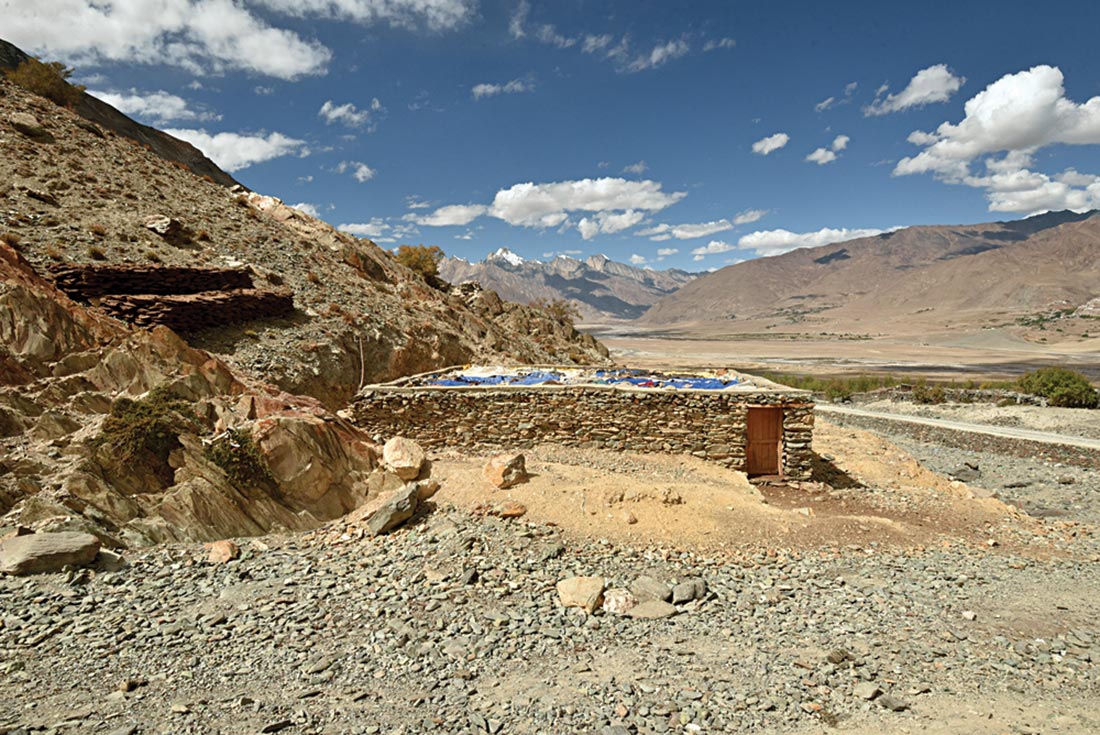
To discourage snow leopards from predating on livestock such as sheep and goat, SLC-IT replaced uncovered or flimsily covered pens with fully-covered corrals with solid walls, preventing the entry of snow leopards. This proved largely successful, and families implementing this system have been appreciative of these efforts. Photo: Ashish Kothari.
Finally, a long-term goal for SLC-IT could be to enable community self-reliance in the measures needed for human-wildlife coexistence, livelihood enhancement, and climate adaptation. This is crucial to reduce dependence on NGOs and the government. Indeed in some other parts of Ladakh, SLC-IT has been enabling villagers to become more self-reliant. There is experience both from the Ladakh region, and elsewhere in India, of the conditions in which such approaches can flourish: land/ecosystem rights and community conservation, strengthening of self-governance by gram sabhas and panchayats (and traditional governance systems such as the goba in Ladakh), strengthening the ability of communities to hold governments accountable and resist destructive infrastructure development, and so on. SLC-IT and other groups could help in small but effective ways to enable this. The long-term future of the snow leopard, brown bear and myriad other wildlife of Zanskar can be secured only if the region’s people are empowered and passionate enough to take this issue into their own hands.
Ashish Kothari is a Founder-member of Kalpavriksh, part of the coordinating team of Vikalp Sangam and Global Tapestry of Alternatives, and a Board member of Greenpeace India.







